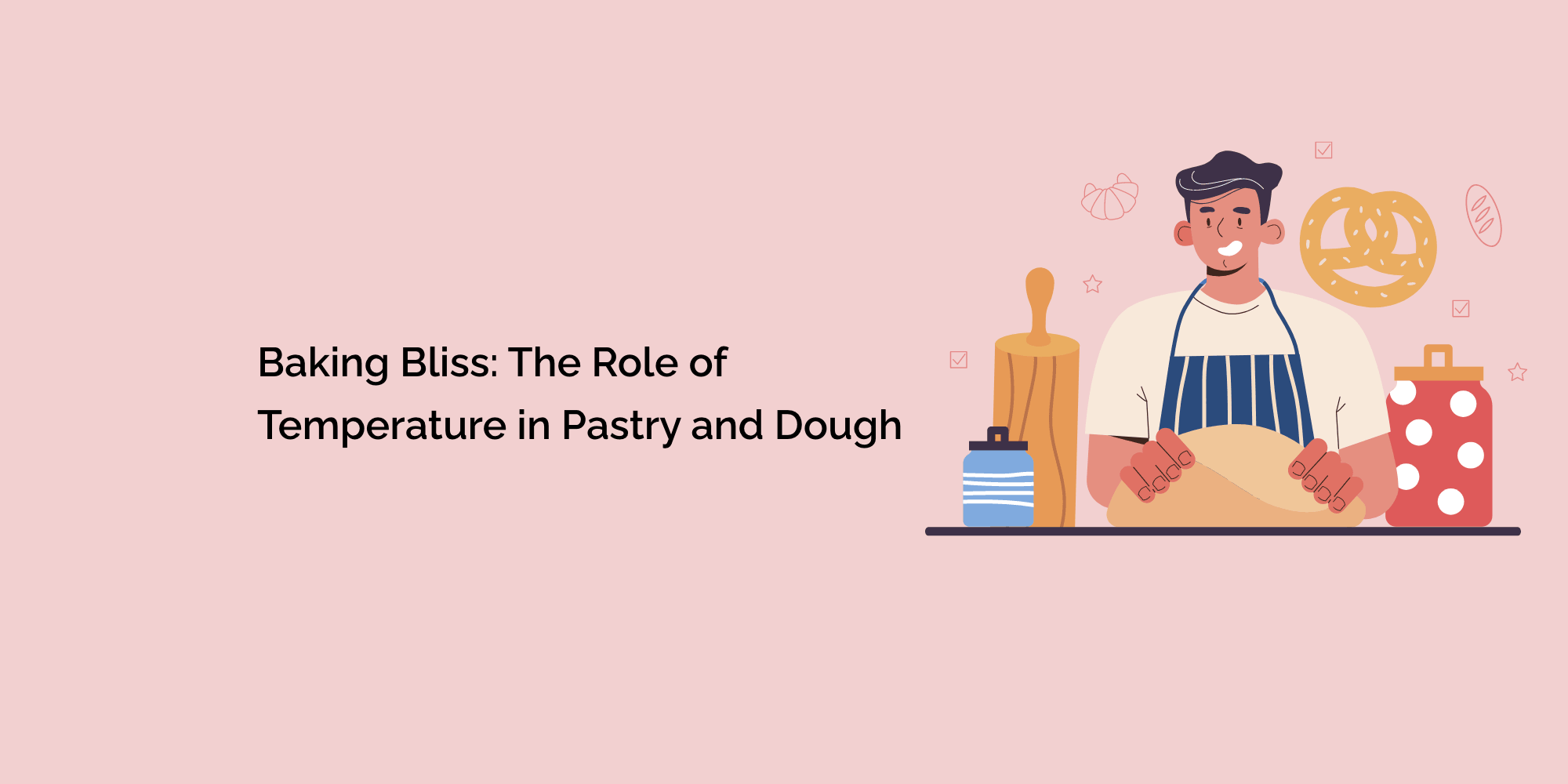Baking is often considered both an art and a science, and one of the key scientific factors that can make or break your baked goods is temperature. Whether you're crafting a delicate pastry or kneading dough for bread, precise temperature control is paramount for achieving the perfect texture, flavor, and appearance.
In this blog, we'll delve into the role of temperature in pastry and dough, uncovering the science behind the baking bliss.
1. The Temperature Spectrum
Before we explore specific temperature-related aspects of baking, it's important to understand the temperature spectrum involved in the baking process:
-
Room Temperature (68-72°F or 20-22°C): Many recipes call for ingredients like butter, eggs, and milk to be at room temperature. This ensures proper mixing, emulsification, and aeration.
-
Cold (32-40°F or 0-4°C): Cold ingredients, like chilled butter or water, are often used in pastry to create flaky textures, while cold fermentation is key in bread making.
-
Warm (110-115°F or 43-46°C): Warm water or milk activates yeast, kickstarting fermentation in bread and producing carbon dioxide gas for leavening.
-
Hot (350-450°F or 175-230°C): High baking temperatures transform dough and batter, creating the golden brown crusts and delectable textures we love.
2. Pastry Perfection
Pie Crusts
Pastry crusts, whether for pies or tarts, rely on temperature control for flakiness. Cold fat (usually butter or lard) is cut into the flour and kept cold to create layers when it melts in the oven. This layering produces a delicate, flaky texture that's the hallmark of a great crust.
Puff Pastry
Puff pastry takes the concept of temperature control to the next level. It involves creating alternating layers of dough and butter through a process called lamination. This dough-butter-dough-butter sequence is meticulously rolled and chilled repeatedly to create the puff pastry's signature flaky, buttery layers.
3. The Science of Dough
Bread Dough Fermentation
Bread dough is a living system, thanks to the action of yeast. Yeast ferments sugars in the dough, producing carbon dioxide gas that leavens the bread. The temperature of the dough greatly influences fermentation:
-
Cool Fermentation: A cooler dough (around 68°F or 20°C) leads to a slower, more controlled fermentation, producing a tangy flavor and chewy texture as found in artisan bread.
-
Warm Fermentation: For a quicker rise, warmer dough (between 80-85°F or 27-29°C) can be used. This results in a milder flavor and softer crumb, as seen in many sandwich loaves.
Kneading Dough
Kneading dough develops gluten, the protein responsible for the bread's structure and texture. The temperature of the dough during kneading affects gluten formation:
-
Cold Kneading: Kneading cold dough can result in less extensible gluten and a denser crumb.
-
Warm Kneading: Warmer dough encourages better gluten development, leading to a more open crumb and improved bread structure.
4. Baking Temperatures
The temperature at which you bake your pastries and bread is the final crucial factor. Here are some examples:
-
High Temperatures: Baking bread at high temperatures (around 450°F or 230°C) creates a steamy environment that causes rapid oven spring, creating a thick crust and an airy crumb.
-
Lower Temperatures: Some breads, like sourdough, are baked at lower temperatures (around 400°F or 200°C) for a longer time to develop complex flavors and a crisp crust.
-
Precise Temperatures: Baking delicate pastries like macarons or soufflés often requires precise temperature control to achieve the desired rise, texture, and appearance.
Conclusion
Temperature is the unsung hero of the baking world, influencing every aspect of pastry and dough preparation. Whether you're striving for a flaky pie crust, a perfectly risen loaf of bread, or a delicate soufflé, understanding and controlling temperature is key to achieving baking bliss.
So, the next time you embark on a baking adventure, remember that your thermometer and thermostat are your trusty companions on the path to pastry perfection.








